Ostrava is a city in the borderland of Moravia and Silesia in the Czech Republic. With a population of nearly 300,000, it is the third largest city in the Czech Republic and the centre of the second largest urban agglomeration after Prague.
Ostrava had been a predominantly industrial city since the 18th century, when the discovery of extensive coal deposits in the area led to an industrial boom. Ostrava quickly grew from a small provincial town of around one thousand inhabitants to one of the largest cities in the region.
As a major steel manufacturing centre, Ostrava suffered heavy destruction during the Second World War, and holds the sad distinction of being one of the most polluted cities of the European Union. Many parts have been redeveloped though, and several formerly industrial areas have become cultural centres and tourist attractions.
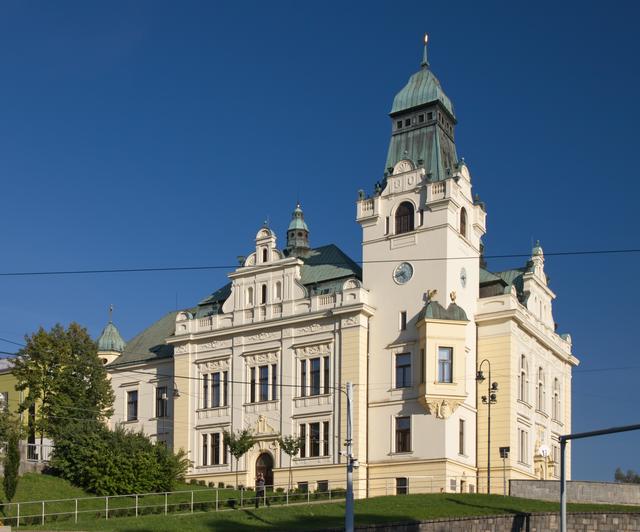
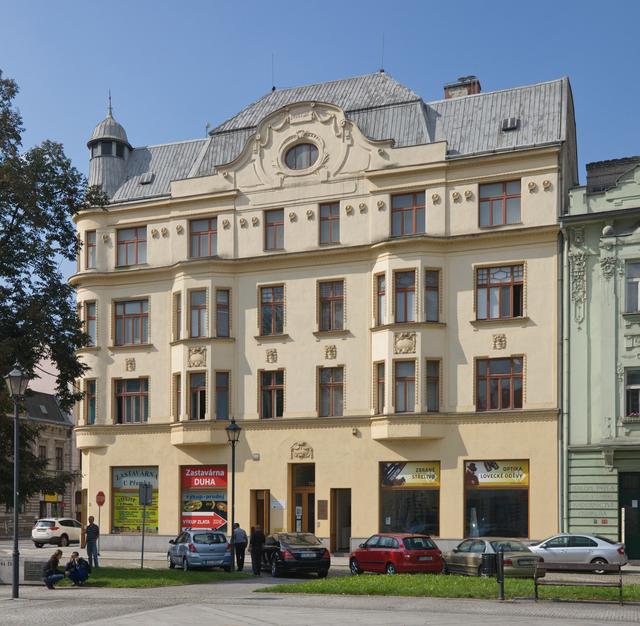
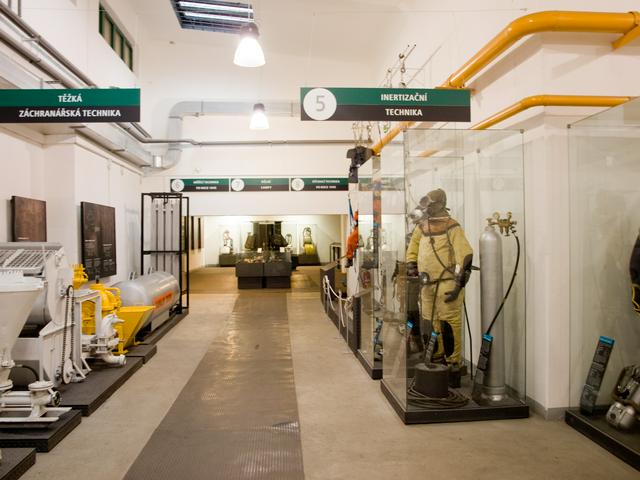
- Landek park, Pod Landekem 64 (bus stop „Hornické muzeum”, +420 596 131 803. Daily 09:00-18:00. Located on the former Anselm Mine (one of the first to be established at the end of the 18th century in what is today the Petřkovice District of Ostrava), the Mining Museum was opened in the early 1990s. It is the largest mining museum in the Czech Republic. The coal seams of the former Anselm Mine surface at the Landek National Nature Reserve, a world famous site in terms of geology, archaeology, history, natural sciences and mining. People wer using black coal here more than 25,000 years ago. A unique exhibition of the Mining Museum highlights the evolution of coal mining in the Ostrava-Karviná region, as well as mining technology, and rescue services. In fact, it is the largest exhibition of its kind in the world. The site includes sports and recreation facilities, bowling, cycling trails and a children’s corner. 70Kč (short circuit) or 150Kč (long circuit), double price for an English guide, book him in advance.
- The Vítkovice Area, Ruská 101 (tram stop „Důl Hlubina”, +420 604 603 166. May–Oct, excursions begin at 10:00, noon, 14:00 and 16:00. This had been an industrial area since the first half of the 19th century. In 2002, in view of its exceptional character, the entire ground was declared a site of National Cultural Heritage. There was the complete technological flow: the mining of coal, a coke plant, and iron and steel production, all of which was unique to the Czech Republic. This historic landmark was listed as the European Cultural Heritage in 2008. The Vítkovice complex Dolní oblast is set to undergo extensive reconstruction. The giant gas container for blast furnace gas (around 70 m wide and 33 m high) will be modified into a concert hall for 1,500 visitors, a gallery, café, etc., based on design by leading Czech architect, Josef Pleskot. Blast Furnace no. 1 was to become the start of a tour route, and the sixth energy central office was to become an industrial museum (project authored by Václav and Helena Zemánkovi). The expected date for completion of reconstruction was 2013. 80Kč.
- The Michal Mine, Československé armády 95/413 (trolleybus stop „Michálkovice”. Apr, Oct: Sa Su; May–Sep: Tu–Su; excursions begin at 09:00, 11:00, 13:00, 15:00, in Jul and Aug also at 17:00. Michal Mine, whose history goes back to 1843, is an extremely valuable authentic industrial site in terms of construction and technical equipment. The area was declared a National Cultural Landmark in 1995. Today, the museum provides visitors with the chance to look over all of the above groundwork areas that a miner would have to go through to get to his shift. The tour includes the dressing rooms, washrooms, registry, dispatching, and most importantly, the machine room, with its original and unique equipment that had worked until 1993, when the mine was permanently closed. The scene, intentionally left intact, without any artificial arrangements being made, gives the impression as if work there has just ended. 90Kč, double price for an English guide, book him at least 1 day in advance.
- Silesian Ostrava Castle, Hradní 1 (bus stop „Hradní náměstí” or tram stop „Důl Zárubek”, +420 596 115 967. Mar–May Sep–Dec: Tu–Su 10:00–18:00; Jun–Aug: daily 09:00-20:00. The Silesian Ostrava Castle is the city's most historic cultural monument. It was built in the second half of the 13th century, close to the confluence of the Lučina and Ostravice rivers, where a fortified Slavonic settlement had once stood. In 1872, the castle burnt down, but was later re-built. The main cause of its destruction was coal-mining, with seams worked directly beneath the castle. The whole structure sank 16 m into the ground! The castle has been reconstructed and visitors now can view in its interior several permanent exhibitions telling the history of the building and the city of Ostrava, an exhibition of torture instruments, the castle’s vaulted cellars with witches, fresh-water fish aquaria and the castle gallery. 70Kč.
- The Miniuni, Výstaviště Černá louka (tram stop „Výstaviště”, +420 596 119 900. Mar–May Sep–Oct: Tu–Su 10:00–18:00,;Jun–Aug: daily 09:00-20:00; Nov–Dec: Tu–Su 1000–16:00. The Miniuni is an interesting attraction for children and adults. Spread out over 1.5 hectares visitors can see more than 30 models of significant buildings of European cities, like Big Ben, Old Town Hall or one of the best-known landmarks of Berlin the Brandenburg Gate, all dominated by the 12 metre-high Eiffel tower. The models are built at a scale of 1:25. Recently added are the Wonders of the Ancient Times. There are railway lines with little trains running across the grounds and waterways with a steamship. Special exhibitions and entertainment events for children are organized here regularly. 70Kč.
- The Ostrava Zoo, Michálkovická 197 (bus stop „Zoo”, +420 596 241 269. Sep–Mar 09:00–16:00, Apr–Aug 09:00–19:00. The Ostrava Zoo was founded in 1951. It covers an area of 100 hectares and is the home to nearly 360 different species of animals. One of the most popular attractions is the seasonal, commented feeding of animals, evening guided tours and a number of accompanying events, not only for children (Children’s Day, lampion parades, decoration of the Christmas tree, etc.) There are several children’s corners inside the Zoo compound. If there is enough snow, visitors may go cross-country skiing directly inside the Zoo. 90Kč.
- The Ostrava Museum, Masarykovo náměstí 1, +420 597 578 450. M–F 09:00-17:00, Sa 09:00-13:00, Su 14:00-17:00. The museum is in one of the oldest buildings in Ostrava, the Old Town Hall on Masaryk Square. A new permanent exhibit opened here in June 2009, containing art history collections, history of the city and the nature and landscape of the local area. The unique exhibit, and the pride of the Ostrava Museum, is the indoor astronomical clock, 225 cm high – a work by Jan Mašek. The astronomical clock offers 4 parts – its own clock face, the calendar, and the astronomical and planetary parts. 60Kč.
- The Viewing Tower of the New City Hall, Prokešovo náměstí 6 (bus and trolleybus stop „Nová radnice”, +420 599 443 096. Daily 09:00-19:00. The Viewing Tower is one of the city's most popular tourist attractions. On a clear day, it is possible to see the entire city, the nearby Beskydy Mountains, and neighbouring Poland. The Viewing Tower has dominated the Ostrava skyline since it was built at the New City Hall (the largest in the Czech Republic) in 1930. The strict functionalist style of the tower creates, in the opinion of its designers, a noble beacon of concrete, metal and glass. The tower reaches 298.05 metres above sea level, or roughly 85.60 metres above ground level. The tower is equipped with an illuminated clock face, an elevator, and a lookout deck 72 metres above the ground. The Ostrava City Information Centre, located directly beneath the tower, provides information about the city, in several languages.
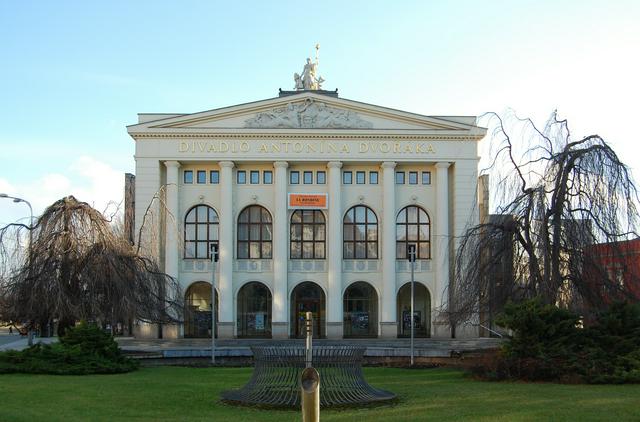
Landek park, Pod Landekem 64 (bus stop „Hornické muzeum”, +420 596 131 803. Daily 09:00-18:00. Located on the former Anselm Mine (one of the first to be established at the end of the 18th century in what is today the Petřkovice District of Ostrava), the Mining Museum was opened in the early 1990s. It is the largest mining museum in the Czech Republic. The coal seams of the former Anselm Mine surface at the Landek National Nature Reserve, a world famous site in terms of geology, archaeology, history, natural sciences and mining. People wer using black coal here more than 25,000 years ago. A unique exhibition of the Mining Museum highlights the evolution of coal mining in the Ostrava-Karviná region, as well as mining technology, and rescue services. In fact, it is the largest exhibition of its kind in the world. The site includes sports and recreation facilities, bowling, cycling trails and a children’s corner. 70Kč (short circuit) or 150Kč (long circuit), double price for an English guide, book him in advance.
The Vítkovice Area, Ruská 101 (tram stop „Důl Hlubina”, +420 604 603 166. May–Oct, excursions begin at 10:00, noon, 14:00 and 16:00. This had been an industrial area since the first half of the 19th century. In 2002, in view of its exceptional character, the entire ground was declared a site of National Cultural Heritage. There was the complete technological flow: the mining of coal, a coke plant, and iron and steel production, all of which was unique to the Czech Republic. This historic landmark was listed as the European Cultural Heritage in 2008. The Vítkovice complex Dolní oblast is set to undergo extensive reconstruction. The giant gas container for blast furnace gas (around 70 m wide and 33 m high) will be modified into a concert hall for 1,500 visitors, a gallery, café, etc., based on design by leading Czech architect, Josef Pleskot. Blast Furnace no. 1 was to become the start of a tour route, and the sixth energy central office was to become an industrial museum (project authored by Václav and Helena Zemánkovi). The expected date for completion of reconstruction was 2013. 80Kč.
The Michal Mine, Československé armády 95/413 (trolleybus stop „Michálkovice”. Apr, Oct: Sa Su; May–Sep: Tu–Su; excursions begin at 09:00, 11:00, 13:00, 15:00, in Jul and Aug also at 17:00. Michal Mine, whose history goes back to 1843, is an extremely valuable authentic industrial site in terms of construction and technical equipment. The area was declared a National Cultural Landmark in 1995. Today, the museum provides visitors with the chance to look over all of the above groundwork areas that a miner would have to go through to get to his shift. The tour includes the dressing rooms, washrooms, registry, dispatching, and most importantly, the machine room, with its original and unique equipment that had worked until 1993, when the mine was permanently closed. The scene, intentionally left intact, without any artificial arrangements being made, gives the impression as if work there has just ended. 90Kč, double price for an English guide, book him at least 1 day in advance.
Silesian Ostrava Castle, Hradní 1 (bus stop „Hradní náměstí” or tram stop „Důl Zárubek”, +420 596 115 967. Mar–May Sep–Dec: Tu–Su 10:00–18:00; Jun–Aug: daily 09:00-20:00. The Silesian Ostrava Castle is the city's most historic cultural monument. It was built in the second half of the 13th century, close to the confluence of the Lučina and Ostravice rivers, where a fortified Slavonic settlement had once stood. In 1872, the castle burnt down, but was later re-built. The main cause of its destruction was coal-mining, with seams worked directly beneath the castle. The whole structure sank 16 m into the ground! The castle has been reconstructed and visitors now can view in its interior several permanent exhibitions telling the history of the building and the city of Ostrava, an exhibition of torture instruments, the castle’s vaulted cellars with witches, fresh-water fish aquaria and the castle gallery. 70Kč.
The Miniuni, Výstaviště Černá louka (tram stop „Výstaviště”, +420 596 119 900. Mar–May Sep–Oct: Tu–Su 10:00–18:00,;Jun–Aug: daily 09:00-20:00; Nov–Dec: Tu–Su 1000–16:00. The Miniuni is an interesting attraction for children and adults. Spread out over 1.5 hectares visitors can see more than 30 models of significant buildings of European cities, like Big Ben, Old Town Hall or one of the best-known landmarks of Berlin the Brandenburg Gate, all dominated by the 12 metre-high Eiffel tower. The models are built at a scale of 1:25. Recently added are the Wonders of the Ancient Times. There are railway lines with little trains running across the grounds and waterways with a steamship. Special exhibitions and entertainment events for children are organized here regularly. 70Kč.
The Ostrava Zoo, Michálkovická 197 (bus stop „Zoo”, +420 596 241 269. Sep–Mar 09:00–16:00, Apr–Aug 09:00–19:00. The Ostrava Zoo was founded in 1951. It covers an area of 100 hectares and is the home to nearly 360 different species of animals. One of the most popular attractions is the seasonal, commented feeding of animals, evening guided tours and a number of accompanying events, not only for children (Children’s Day, lampion parades, decoration of the Christmas tree, etc.) There are several children’s corners inside the Zoo compound. If there is enough snow, visitors may go cross-country skiing directly inside the Zoo. 90Kč.
The Ostrava Museum, Masarykovo náměstí 1, +420 597 578 450. M–F 09:00-17:00, Sa 09:00-13:00, Su 14:00-17:00. The museum is in one of the oldest buildings in Ostrava, the Old Town Hall on Masaryk Square. A new permanent exhibit opened here in June 2009, containing art history collections, history of the city and the nature and landscape of the local area. The unique exhibit, and the pride of the Ostrava Museum, is the indoor astronomical clock, 225 cm high – a work by Jan Mašek. The astronomical clock offers 4 parts – its own clock face, the calendar, and the astronomical and planetary parts. 60Kč.
The Viewing Tower of the New City Hall, Prokešovo náměstí 6 (bus and trolleybus stop „Nová radnice”, +420 599 443 096. Daily 09:00-19:00. The Viewing Tower is one of the city's most popular tourist attractions. On a clear day, it is possible to see the entire city, the nearby Beskydy Mountains, and neighbouring Poland. The Viewing Tower has dominated the Ostrava skyline since it was built at the New City Hall (the largest in the Czech Republic) in 1930. The strict functionalist style of the tower creates, in the opinion of its designers, a noble beacon of concrete, metal and glass. The tower reaches 298.05 metres above sea level, or roughly 85.60 metres above ground level. The tower is equipped with an illuminated clock face, an elevator, and a lookout deck 72 metres above the ground. The Ostrava City Information Centre, located directly beneath the tower, provides information about the city, in several languages.
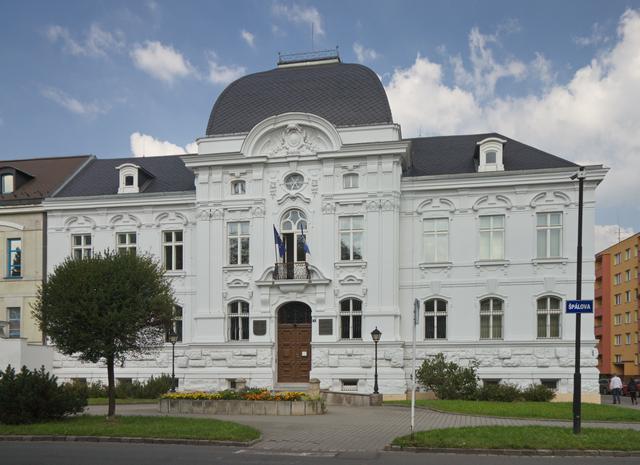
- Golden Spike Ostrava, Závodní 86 (tram stop „Městský stadion”. Athletics meeting, part of the IAAF World Challenge. Normally held at the end of May or beginning of June. Usain Bolt has competed here from 2007 to 2010.
- Colours of Ostrava. The Colours of Ostrava international music festival features many domestic and world renowned musical acts. The festival is organised in the Ostrava city centre and in clubs on Stodolní Street every year, with the participation of more than 100 bands and DJs from around the world. The pleasant summer atmosphere is enhanced with a movie theatre presenting musical video clips and movies, a special dancing stage, drums, salsa, and belly-dancing workshops, and the Children's World, enjoyed especially by parents and kids. It was awarded the 2005 Festival of the Year.
- The International Music Festival Janáček's May Ostrava. The Janáček May International Music Festival is the oldest and largest music festival in Ostrava, founded in 1975. It is organised by the City of Ostrava and the Janáček Philharmonic Orchestra. The festival attracts not only renowned musical talent from Europe and around the world, but also hosts musicological conferences, exhibitions and theatre performances.
- Spectaculo Interesse, Pivovarská 15. In 1995, Ostrava's Puppet Theatre held the first Spectaculo Interesse International Puppet Theatre Festival, establishing the city on the map of European puppetry. Every two years, puppet masters from such diverse places as France, Russia, Hungary, Switzerland, Poland, South Korea, Slovakia, and Austria come to perform. The festival holds a competition, and many of the performances are held in the city's modern, custom-designed Puppet Theatre, and out on the streets among the public.
Golden Spike Ostrava, Závodní 86 (tram stop „Městský stadion”. Athletics meeting, part of the IAAF World Challenge. Normally held at the end of May or beginning of June. Usain Bolt has competed here from 2007 to 2010.
Colours of Ostrava. The Colours of Ostrava international music festival features many domestic and world renowned musical acts. The festival is organised in the Ostrava city centre and in clubs on Stodolní Street every year, with the participation of more than 100 bands and DJs from around the world. The pleasant summer atmosphere is enhanced with a movie theatre presenting musical video clips and movies, a special dancing stage, drums, salsa, and belly-dancing workshops, and the Children's World, enjoyed especially by parents and kids. It was awarded the 2005 Festival of the Year.
The International Music Festival Janáček's May Ostrava. The Janáček May International Music Festival is the oldest and largest music festival in Ostrava, founded in 1975. It is organised by the City of Ostrava and the Janáček Philharmonic Orchestra. The festival attracts not only renowned musical talent from Europe and around the world, but also hosts musicological conferences, exhibitions and theatre performances.
Spectaculo Interesse, Pivovarská 15. In 1995, Ostrava's Puppet Theatre held the first Spectaculo Interesse International Puppet Theatre Festival, establishing the city on the map of European puppetry. Every two years, puppet masters from such diverse places as France, Russia, Hungary, Switzerland, Poland, South Korea, Slovakia, and Austria come to perform. The festival holds a competition, and many of the performances are held in the city's modern, custom-designed Puppet Theatre, and out on the streets among the public.
Ostrava is the shopping centre of the region. You can find small specialised shops, hypermarkets and shopping galleries. Souvenirs are sold in branch offices of the Ostrava City Information Centre.
- Forum Nova Karolina, a large and modern shopping mall close to the city centre with many stores from international chains, a hypermarket, specialty stores and a food court.
- Laso, a shopping centre containing many smaller shops just off the main city square.
In such a big city the number of restaurants is naturally enormous, ranging from the very famous restaurants to the less expensive trattorie or pizzerie. Whether you are looking to enjoy classical Czech food, regional specialities or international cuisine, Ostrava probably has what you are looking for. A visit to the region would not be complete without a pint of the local beer, “Ostravar”, which has been brewed in the city since 1897. The main street for wining, dining and having a great time is Stodolní Street, in the heart of the city. It boasts over 60 bars and restaurants in an area covering just a few blocks.
- La Petite Conversation, Chelčického 8. M-Th 07:00-19:00, F 07:00-20:00, Sa 08:00-15:00. Close to the Stodolní tram stop, the only real Belgian café in Ostrava. Very good sandwiches and coffee. Sandwiches from 49 Kč.
- Café au pere tranquille (French café). M-Th 07:00-19:00, F 07:00-20:00, Sa 08:00-15:00. Pancakes, French cuisine from 75 Kč.
- Harenda u Barborky - stylish restaurant at the Mining museum. Czech, Mining cuisine from 15 Kč.
- Koras - culinary specialities, International cuisine. culinary specialities, International cuisine.
- Moravská chalupa - stylish restaurant with regional specialities. Czech specialities from 40 Kč.
The secret sweet treats of Ostrava are the katowicke rurki, named after the nearby city of Katowice in Poland - although they are arguably a version of a similar treat popular in the entirety Poland, and not peculiar to Katowice at all. The katowicke rurki consist of a sweet wafer rolled into a tube, and then filled with pařížská šlehačka, both using a specially-designed machine. Pařížská šlehačka, in turn, is a filling vaguely resembling chocolate-flavoured whipped cream, although quite often having nothing to do with either cream or chocolate when it comes to its ingredients, and obviously having no obvious connection to the city of Paris after which it is ostensibly named.
Katowicke rurki are usually made by specialized confissers in possession of one of the unique machines, who often have been operating their specialized businesses for decades. One of those is hidden in the Hornicka street.
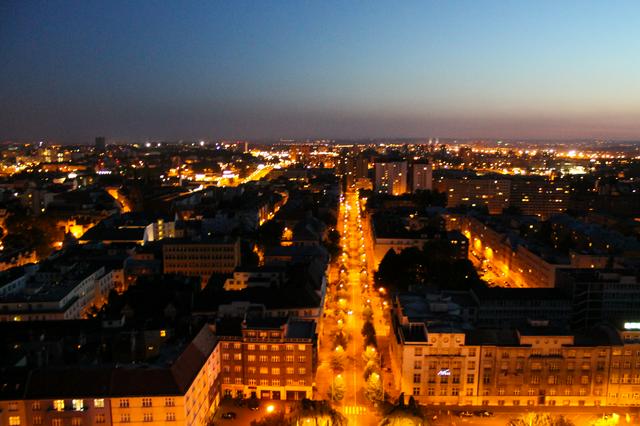
La Petite Conversation, Chelčického 8. M-Th 07:00-19:00, F 07:00-20:00, Sa 08:00-15:00. Close to the Stodolní tram stop, the only real Belgian café in Ostrava. Very good sandwiches and coffee. Sandwiches from 49 Kč.
Café au pere tranquille (French café). M-Th 07:00-19:00, F 07:00-20:00, Sa 08:00-15:00. Pancakes, French cuisine from 75 Kč.
Harenda u Barborky - stylish restaurant at the Mining museum. Czech, Mining cuisine from 15 Kč.
Koras - culinary specialities, International cuisine. culinary specialities, International cuisine.
Moravská chalupa - stylish restaurant with regional specialities. Czech specialities from 40 Kč.
Ostrava is home to the famous Stodolní street, the biggest strip of bars and pubs in the country. Drinks are generally cheaper than in Prague and atmosphere is more local.
- E99, Porážková 22 (Western end of Stodolní street, +420 595 542 060. M-F 11:00-02:00, Sa 11:00-04:00, Su closed. Friendly pub at the end of Stodolní street, near the train station. Gambrinus 26Kč, Plzen 30Kč.
E99, Porážková 22 (Western end of Stodolní street, +420 595 542 060. M-F 11:00-02:00, Sa 11:00-04:00, Su closed. Friendly pub at the end of Stodolní street, near the train station. Gambrinus 26Kč, Plzen 30Kč.
While Ostrava remains a quiet and pleasant city, locals will let you know that many areas have sadly gained an unfortunate reputation for widespread drug consumption. Always be on the lookout for junkies.
